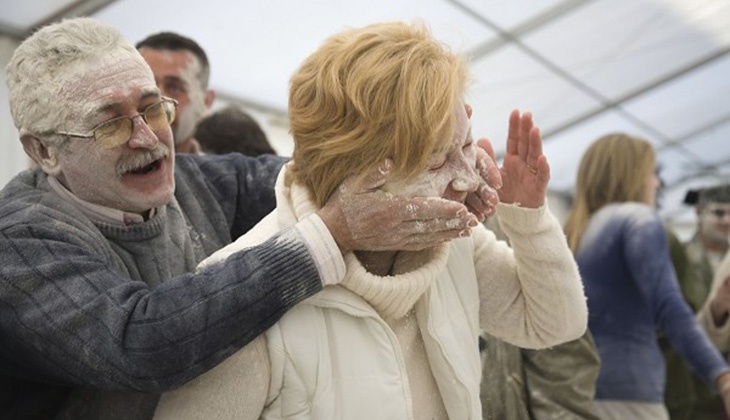Alozaina, a beautiful town nestled in the vicinity of the Sierra de las Nieves, is home to the most unique carnival celebration in the province of Málaga. The town is covered in white every February, and not exactly because of the snow. Although this could also be the case. We're talking about the Flour Carnival, and its popularity is such that it's considered to be one of Málaga's Unique Festivals, a distinction that is granted by the Provincial Council to some of Málaga's leading and most original festivities. This year it will last from 19 to 21 February.
But why flour? This celebration is also known as the Flour Festival because, apart from the traditional carnival fancy dress and copla competitions, which are held in the main square on Saturday night, the locals of Alozaina and visitors get ready with bags full of flour to "whiten" whoever they find in their path. Be careful with the clothes you choose to wear because you're sure to end up completely covered in flour.
According to tradition, this manner of celebrating the Carnival comes from an old custom, where the town's young men covered young women in flour in search of "noviería" (starting a serious relationship). If the young woman the man sought to woo was interested in him, she responded by covering him with flour. The baile de la rueda (a circle dance) and the Burial of the Sardine are also typical of these festivities.
What's really important is that nobody forgets to take a bag of flour. And to have fun at Alozaina's Flour Carnival.
A little bit of history
The roots of Alozaina's Carnival date back to the end of the 15th century (1490-1500), among the population that repopulated the town of Alozaina, who had mainly come from the region of Castile, where there are similar celebrations in which flour is the essential material of the festival. Through all these centuries, Alozaina 's population has remained faithful to the tradition, although in the years of economic hardship the flour was replaced by other less valuable substances such as almagra (a reddish pigment in powder form), the black scraped off pots and pans, soot from fireplaces and chimneys and the azulillo (blue "soap") used for washing clothes.








